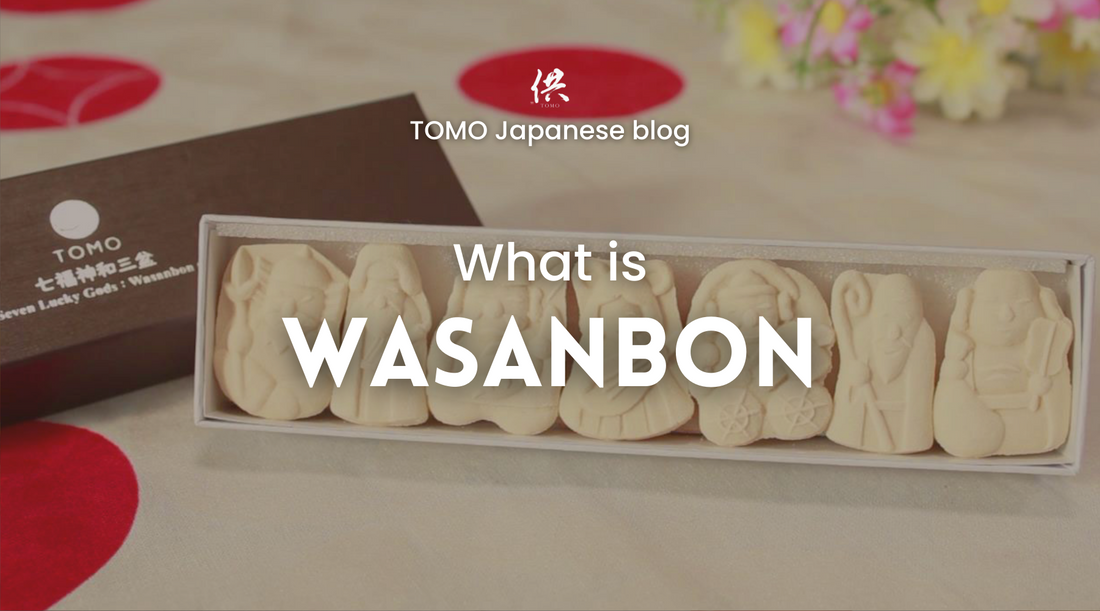Japanese cuisine is known to be nutritious, simple and natural. Savory plates such as sushi, okonomiyaki or takoyaki are already well-known worldwide. Japanese sweets are also getting more and more attention outside of the archipelago. If you are a Japanese food lover, you might have already tried daifuku, manju, or mochi, which are among the most popular Japanese desserts. But have you ever heard of wasanbon sugars? And do you know how to eat them properly?

How has the production of wasanbon started in Japan?
Sugar production increased during the Edo period thanks to Yoshimune Tokugawa. Later, Matsudaira Yoritaka, a feudal lord, asked one of his subordinate, Ikeda Genjo, to develop research regarding sugar production. When he passed away, his apprentice Sakiyama Shukei went on a pilgrimage to Shikoku island and saved the life of a man called Seki Ryosuke. To express his gratitude, he agreed on giving Sakiyama sugarcane from Satsuma, which was at the time prohibited. Thanks to this meeting and collaboration, research regarding the production of sugar could be developed in Japan, and wasanbon sugar was born.

What is wasanbon? What does “wasanbon” mean?
Wasanbon is a wagasahi, also known as a Japanese traditional high quality sugar. This treat is what we can call a dry sweet.The kanji (=Japanese characters) 和 (=“wa”) means “Japan style” but also “harmony”. The word “wasanbon” can be translated as “thrice refined Japanese” sugar. Another feature of this Japanese sugar is its minerals, wasanbon is a non-centrifugal type of raw sugar, and it contains sodium, potassium, calcium, magnesium, and more.

How do you produce wasanbon?
Japanese sugar is mostly produced in Hokkaido or Okinawa. However, to make wasanbon, you will need a specific type of sugar cane called chikusha or taketo. This plant is harvested between December and February, in Kagawa and Tokushima prefectures, on Shikoku Island.
A total of 8 steps is required to produce wasanbon sugars. Simply explained:
- The chikusha juice is first extracted
- The cane juice is boiled
- The extract is purified
- The extract is boiled a second time
- The sugar is left to rest
- The refining process is repeated two more times
- The sugar is sifted
- To finish with, wasanbon is dried.
It can take up to 20 days to obtain the final sugar. If you have the opportunity to travel in Japan, it is also possible to make your own wasanbon in a Japanese factory. The process seems difficult, but don’t worry, even children can make their own wasanbon!

What does wasanbon look like?
At the end of the making process, wasanbon has originally a pale color.However, it is common to find wasanbon with pastel colors and mold with Japanese traditional patterns such as lucky cats, Japanese flowers and leaves. The form usually changes according to seasons, and it is possible to find more modern designs inspired by Halloween or even Christmas. You can even find Seven Lucky Gods (Bishamonten, Jurojin, Ebisu, Benzaiten, Daikokuten, Fukurokuju, and Hotei) shaped wasanbon.

How does wasanbon taste and how do you eat wasanbon?
Wasanbon sugar is known for its unique and delicate taste. This Japanese sweet offers a light sweetness and melts slowly in the mouth. Wasanbon is commonly used with a cup of matcha (Japanese green tea), brown rice coffee or tea. However, you can also enjoy these confectionaries like candy: unlike most sugars, they are not too sweet and they will not bring you any discomfort.

Wasanbon is a common ingredient in Japanese pastries such as yokan or castella. Some cooks even use it for sushi rice!
Another great benefit of wasanbon sugars is their durability: you can conserve them for a long time, and they are light and easy to carry. This is why these treats are a common souvenir for those who travel across Shikoku Island.
Where can you buy wasanbon sugars?
on TOMO Japanese Online Store (for special inquiries: tomo@jat.asia)
on Amazon Japan, Amazon US and Amazon France
on Shopee SG
Conclusion
Wasanbon is an upper-class Japanese sugar, made from the same traditional method for more than 200 years. Wasanbon can be enjoyed with unsweetened drinks or like candy. It can also be used in pastries and savory recipes. You might also see Japanese people offering some of these fine sugars in shrines or temples as an offering.

